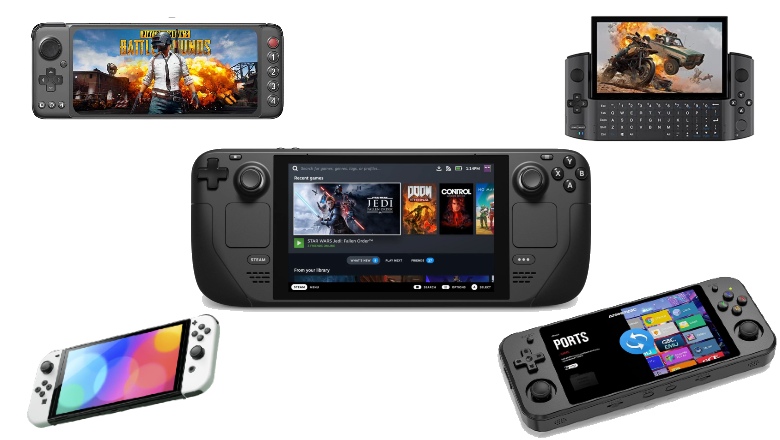
The Steam Deck is out in the wild, but thanks to a worldwide chip shortage, getting hold of this must-have item isn’t as smooth as it should be. If you tire of waiting and want something portable to play the latest AAA games or the best retro titles from yesteryear, we’ve compiled an exhaustive guide to the best Steam Deck alternatives you absolutely need to check out.
Also of Interest: Best Handheld Retro Consoles
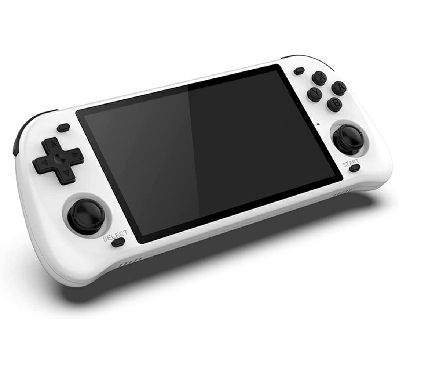
|
Amazon Customer Reviews
|
Price: $178.99 Shop at Amazon | Shop now Read our review |
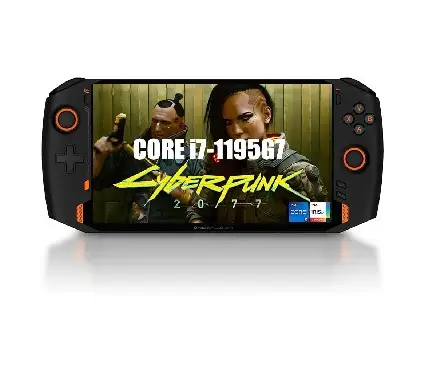
|
Amazon Customer Reviews
|
Price: $679.95 Shop at Amazon | Shop now Read our review |
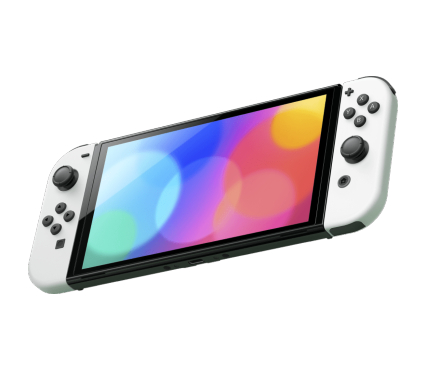
|
Amazon Customer Reviews
|
Price: $334.99 Shop at Amazon | Shop now Read our review |
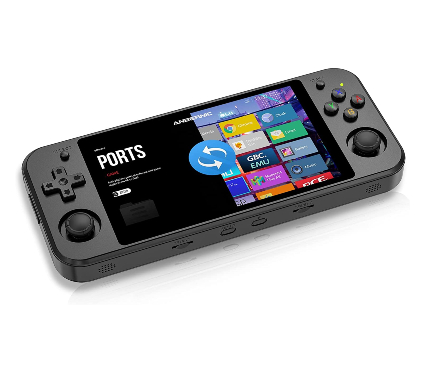
|
Amazon Customer Reviews
|
Price: $149.99 Shop at Amazon | Shop now Read our review |
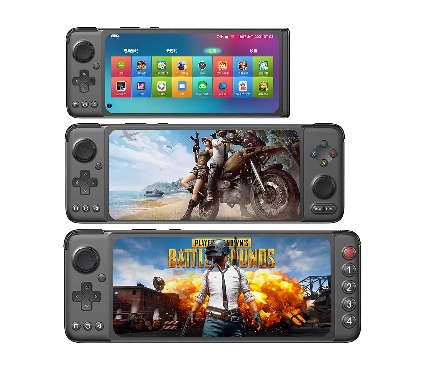
|
Amazon Customer Reviews
|
Price: $369.99 Shop at Amazon | Shop now Read our review |
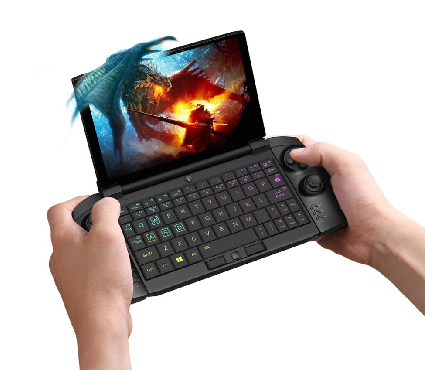
|
|
Price: $1,338.00 Shop now at AliExpress | Shop now Read our review |
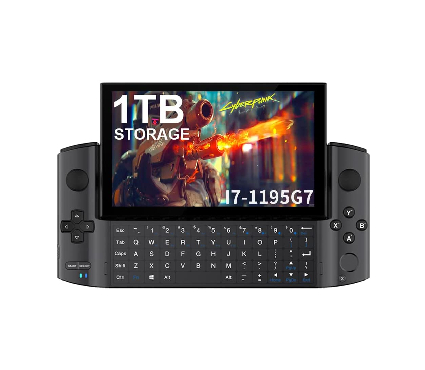
|
Amazon Customer Reviews
|
Price: $749.99 Shop at Amazon | Shop now Read our review |
-
1. EDITOR’S CHOICE: Powkiddy RGB10 Max 2
Pros:- Plays everything from the 8-and-16 bit era all the way to PS1
- New shell is much more ergonomic and the improved triggers are lush
- Much cheaper than the Steam Deck
Cons:- N64 and Dreamcast compatibility isn't great
- Anolog sticks are fine but could be better
- RK3326 chipset is fine but somewhat overused
Thankfully, not all Steam Deck alternatives need to cost a bomb. The Powkiddy RGB10 Max 2 is one such example that’s both affordable and perfect for retro gaming to a point.
The RGB10 Max 2 is a follow-up to Powkiddy’s popular RGB10 Max. It is, essentially, a portable emulator console with a crisp five-inch screen. In terms of what it can play, the list is long thanks to the internal RK3326 chipset, which can be found in the majority of retro devices simply due to how affordable and readily available it is.
The RK3326 chip can emulate everything up to PS1 flawlessly. So that’s NES, SNES, Master System, Genesis, Mega CD, Gameboy, Gameboy Color, Gameboy Advance, PS1, and arcade systems released in a similar timeframe. Despite having the option to run Dreamcast and N64, expect compatibility in those areas to be spotty at best, and unplayable at worst. There are some exceptions, but you shouldn’t buy this console if you’re looking to play those two systems.
The real beauty of the RGB10 Max 2 is how premium it feels at times. The operating system is a modified EmuELEC, which looks great and is easy to understand. Likewise, the upgrade to the outer shell and the new triggers really make playing this device that much more comfortable.
This may be a limited device in terms of raw power, but if you were planning on picking up a Steam Deck to play retro games, the RGB10 Max 2 is a much more affordable and sensible option.
Find more information and reviews here
-
2. RUNNER UP: ONEXPLAYER 1S
Pros:- Plays everything from the latest indie hits to AAA games like Cyberpunk 2077
- Stunning 8.4-inch 2.5K display
- ALPS joysticks are great, as is the rumble function
Cons:- Very, very pricey
- Larger than the Nintendo Switch
- Battery life could be better
While very pricey, the OnexPlayer 1S is PC powerhouse you can play from the comfort of your couch.
We’ll get into the power, but it’s the stunning 8.4-inch, 2.5K display that really brings this monster to life. Yes, the screen size, and therefore the overall size, is massive. This won’t be to everyone’s flavor, but if you’re after the best, this is it.
In terms of power, things are wild. The 11th Gen Tiger Lake I7-1195G7 sits at the center, backed by 16GB of LPDDR4 RAM and a 1TB NVMe M.2 SSD. If it’s speed you’re after, the OnexPlayer 1S is a stupidly fast system.
On the graphics side of things, the OnexPlayer 1S utilizes Intel IRIS XE Graphics, which is a smart choice when it comes to a handheld device.
Powering the device is a 10,455mAh battery, which results in around eight hours of video playback. Of course, you’re not going to be buying this device for watching YouTube, are you? For games, expect somewhere in the region of two to three hours total playtime.
That’s not much by any means, but given this monster will play the latest PC games, there has to be a trade-off to accommodate this much power. For comparison, the original Nintendo Switch pulls around 4.4 hours of playtime, so it’s not a massive difference when you factor in what the OnexPlayer is capable of.
Finally, if you do want to use the OnexPlayer for more than just gaming, it ships with three modes: game mode, desktop office mode, and large-screen TV mode.
Sure, there’s no getting around the price here. This thing is expensive. That said, it’s high-end tech capable of playing the latest games, so the price does make sense in a roundabout kind of way.
-
3. Nintendo Switch – OLED Model
Pros:- Upgraded screen offers much clearer color
- Vast library of games, from Pokemon to Mario, and Indie to Retro
- Can be used as a handheld or hooked up to a TV
- Solid battery life of four to nine hours playtime
Cons:- Nintendo's online services are dated
- Nintendo games tend to rarely fall in value
- No option to outright buy certain retro titles
There has never been a better time to pick up a Nintendo Switch. And if you’re after the best, the Nintendo Switch OLED Model is a worthy upgrade.
In the site’s review, TechRadar praised the new Switch model’s excellent use of perfect blacks and accurate color. The OLED model doesn’t redesign the wheel in terms of power of durability, but if you’re looking to play Nintendo games in a vivacious and vibrant way, the OLED version is the way to go. It’s an instantly noticeable upgrade.
Despite being a few years old now, the NVIDIA Custom Tegra processor inside the Switch still stands up today. Nintendo games in particular look gorgeous, even alongside something like the PS5. Sure, PS5 has the edge in terms of photorealism, but Nintendo understands the importance of art styles, which is where the Switch excels.
Not only that, you’ve also got a massive library of games to choose from. Whether it’s Mario Kart 8 Deluxe, Pokemon Legends: Arceus, or Animal Crossing New Horizons, the Nintendo Switch really does have something for everyone, of every age group.
-
4. Anbernic RG552
Pros:- Up to PS1 emulation is near perfect, if not better
- Gorgeous 5.36-inch touchscreen
- Designed to feel comfortable
Cons:- Lacks Gamecube support
- Also lacks light PS2 support
- Is somewhat over-priced for what it is
Depending on what you want the Steam Deck for, the RG552 from Anbernic is a worthwhile consideration.
The RG552 is one of the Steam Deck alternatives worth checking out. It’s essentially a portable emulator console with a rather luscious 5.36-inch screen. If you’re looking to play older games from up to PS1, the RG552 will play those games near perfectly thanks to the RK3399 chipset. In some cases, games will look and feel much smoother than the original hardware. Gameboy Advance games in particular really shine on the RG552 thanks to the upscaling tech found in RetroArch.
In terms of the operating system, the RG552 offers up both Linux and Android, though the Linux build isn’t anywhere near as stable or fruitful as the Android offering.
The biggest issue with the RG552 is the price. For this kind of money, you would expect much more power and compatibility. Sure, up to PS1 runs like a dream, but this price bracket isn’t cheap and should offer Gamecube and light PS2 support.
Pricing aside, the RG552 is a stunning console with a desirable build quality. If you plan on playing 8-bit or 16-bit titles, they will run and look stunning on this beast.
One final thing to note, if you’re not in a rush for the RG552, it is around $20 cheaper on AliExpress, though keep in mind it’ll take longer for it to arrive and you won’t have Amazon’s forgiving returns policy. Still, who doesn’t love saving money?
-
5. GPD XP
Pros:- Plays the best Android games and emulator apps
- Brilliant form factor, complete with detachable controllers
- Solid amount of power
Cons:- Pricey for an Android device
- 8GB of RAM for emulating older systems would have been better
- Doesn't make phone calls
To give you a bit of backstory, GPD as a company are trailblazers, simply because this company doesn’t follow what’s popular and, quite frankly, doesn’t care what people think.
This is a double-edged sword, of course. When GPD gets it wrong, people will be heard. But when GPD gets it right, they really get it right.
Case in point, the GPD XP. This console is a bizarre mash-up of a mobile phone and a Nintendo Switch. The result is something that despite sounding like a Frankenstein of smushed together ideas, really works.
First off, it’s an Android device, which means it has access to all the best Android games and all the best Android emulators. I’d also wager this is where most emulation devices will be heading in the future.
On the power front, don’t expect Intel anything here. This is primarily an Android device and the specs back that up. Inside the GPD XP is the six-core MediaTek Helio G95 backed by 6GB of LPDDR4 RAM and the ARM Mali-G76 MC4 @900MHz GPU.
A device to play the latest AAA PC titles this console is not. As a Switch contender, complete with detachable controllers, capable of playing the latest Android apps on a stunning 6.8-inch screen, the GPD XP is a rockstar in its own right.
-
6. OneGX1 Pro Mini Gaming Laptop
Price: $1,338.00Pros:- Enough power to run the latest AAA games
- Perfect for travel and can just about fit it in your pocket
- Ergonomic design means you can play for hours
- Detachable controllers
- Built-in keyboard
Cons:- Smaller, seven inch screen when compared with the OnexPlayer
- Pricey
- Battery life is around three hours, give or take
Another pricey option, but if you’re after something with a mountain of power that’s portable, the OneGX1 Pro Mini Gaming Laptop is one of the most perfect Steam Deck alternatives out there.
To give you an idea of what it is you’re looking at, because let’s be real, there is a lot to take in – think of the OneGX1 Pro as a Nintendo Switch-style device. The main unit comes in at around the same size as the 3DS. The bulk, then, comes from slotting in the detachable handles (thnk of the handles as the controller or, more aptly, the joy-con).
In terms of style and comfort, the OneGX1 Pro understands ergonomics. It’s the handles that make this console a joy to both hold and play. Whereas consoles like the DS and subsequent 3DS were great, the rounded angles weren’t comfortable to play with. The handles on the OneGX1 Pro really do elevate the whole device into something you can play for hours without needing to crack your hands.
So, let’s talk power. On the CPU front, it’s the Intel Core i7-1160G7 – a good choice for super-fast gaming. Elsewhere you’ve got a meaty 16GB of RAm along with a 512GB PCI-E SSD. Speed really is key here. As for the graphics, the OneGX1 is powered by Intel Iris Xe, which is another smart choice for mobile gaming.
As for battery life, expect around three hours of continuous usage, though that of course depends on which game you’re running. Indie games and older games that require less power will last longer, while the more powerful AAA games could drain battery life faster.
-
7. GPD Win 3
Pros:- Gorgeous screen and can play the latest AAA PC games
- Screen can slide up to reveal a keyboard
- Packed with the tech inside to keep things cool
- Touchscreen
Cons:- Pricey
- Battery life could be better
- Maybe be a little bulky to be considered pocket size
I’ve said it before, but GPD marches to the beat of its own drum, and the GPD Win 3 is another example of that.
Imagine a Switch Lite. Now imagine that with a screen that slides up to reveal a keyboard. Now jam it with a bunch of high-end tech. That’s the pitch for the GPD Win 3.
If it’s the latest AAA PC games you’re looking to play, the GPD Win 3 will do that and then some. Powered by Intel Gen12 Iris Xe graphics and 16GB of LPDDR4 RAM, this thing flies in action. If that’s not enough, you’ve also got a meaty 1TB M.2 NVMe 2280 SSD along with the Intel Gen11 Tiger Lake-U i7-1195G7 processor.
Not only that, the GPD Win 3 also boasts the company’s brilliant ALPS dual 3D joysticks and has a PC-grade cooling solution in the form of a turbofan and dual heat pipes for heat build-ups. This thing is legit a PC in the palm of your hands.
Yeah, this thing is pricey, but given the power, the price does kind of make sense. The biggest issue here is the battery life. You can average around three hours on less demanding titles, but if you’re going for the highest settings on the latest games, playtime will be reduced to around the two-hour mark.
That’s not a massive deal-breaker, but it’s worth factoring into your decision when you’re spending this kind of money.
Steam Deck Specs
To give you an idea of how each of the consoles we've mentioned compares, below you'll find the current Steam Deck specs.
- AMD APU
CPU: Zen 2 4c/8t, 2.4-3.5GHz (up to 448 gigaFLOPS FP32)
GPU: 8 RDNA 2 CUs, 1.0-1.6GHz (up to 1.6 teraFLOPS FP32)
APU power: 4-15W
- 16 GB LPDDR5 onboard RAM (5500 MT/s quad 32-bit channels)
- 64 GB eMMC
256 GB NVMe SSD
512 GB high-speed NVMe SSD
-
Resolution: 1280 x 800 pixels (16:10)Type: Optically bonded IPS LCD for enhanced readabilityDisplay size: seven-inches, diagonalBrightness: 400 nits typicalRefresh rate: 60HzTouchscreen: YesSensors: Ambient light sensor
-
How Much Does the Steam Deck Cost?
- There are currently three versions of the Steam Deck, each with a different solid-state drive capacity.
- 64GB version - $399
- 256GB version - $529
- 512GB version - $649
- The priciest version of the Steam Deck also offers up a faster SSD in the form of NVMe.
- It's also worth noting the cheapest version, the 64GB model, utilizes eMMC for its storage.
- Each model can be upgraded via the micro SD slot, but do keep in mind if you're looking to retain speed, you want a memory card with fast read and write speeds.
- Ideally, you want something like the SanDisk 1TB Extreme microSDXC, which boasts read speeds of up to 160 megabytes per second and write speeds of 90 megabytes per second.
- If you're after something a little more cost-friendly, the SanDisk 256GB Extreme MicroSDXC will do the job. It's got the same read and write speeds as the 1TB model, but only included a quarter of the storage space. If it's retro gaming you're looking at, the 256GB card will be more than enough for most people.
-
Does the Steam Deck Work Without the Internet?
- This is a slightly complex question to answer.
- In order to download games and keep the system updated, you will need an Internet connection. Steam Deck games aren't available in the same way PlayStation 5 or Xbox games are, so it is an online console.
- There's also the issue that certain games require an always-online connection, even if they're singleplayer titles.
- It's not all bad, though. For the games that don't require an always-online connection, those games will be playable offline, without the Internet. You will need to be online to download them - same for online play. But if they're sold with an offline mode, they'll work without an Internet connection.
-
Can You Connect a Steam Deck to a TV or Monitor?
- Yes, you can. And it's all fairly easy to setup as well. The only thing you'll need, aside from the Steam Deck and a TV or monitor, is the USB-C to HDMI converter. We recommend the Anker converter, which comes in at a little under $20.
- The basic process is as follows:
- Connect your HDMI cable to the TV or monitor you plan on using.
- Grab the USB-C to HDMI converter and plug the HDMI cable into the end.
- Now connect the USB end of the USB-C to HDMI converter into the Steam Deck.
- Turn on both your Steam Deck and TV or monitor and it should automatically detect it.
- It really is that simple.
-
Where to Buy the Steam Deck
- Although the Steam Deck is out now, due to worldwide chip shortages, getting hold of one isn't a simple process.
- As of right now, the only place to pick up a Steam Deck is via the official website. Worse still, is you need to reserve the chance to purchase one. It's very complicated, isn't it?
- In terms of when you can expect to get your hands on it, things are a little vague, with an estimate of Q3, 2022.
- In Valve's defense, no one could have predicted the worldwide chip shortage problem, and even companies like Microsoft and Sony are struggling to stay on top of production. Everyone is struggling, so it's best to keep this in mind when you're making your purchasing decision, and also have a think whether you want to wait or pick up on the excellent Steam Deck alternatives listed above.